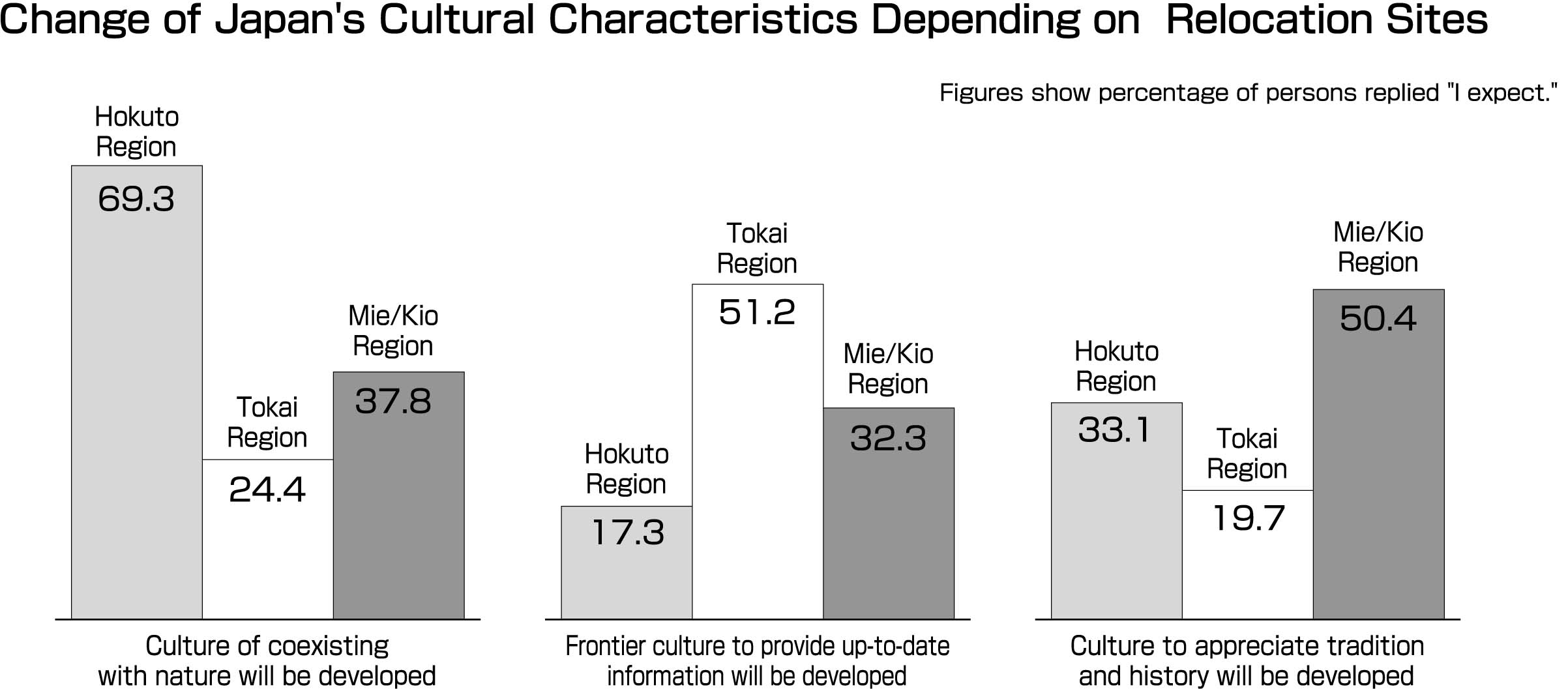

|
Now the Council is promoting investigation and study
in many fields such as topography, landscape, water supply, earthquakes and
other disasters to select candidate relocation sites for the Diet and other
organizations.
Recent Council deliberations on those themes are summarized
here.
| In constructing a new city, for the relocation of the
capital functions, it is necessary to realize an environmentally-friendry
city which serves as an example at home and abroad in its coexistence with
the natural environment. Therefore, even in the candidate site selection phase where the plan is not yet determined, emphasis was placed on clarifying the natural environmental characteristics of each district to appropriately consider the environmental aspects in the planning and project implementation phases. The study was conducted from the following viewpoints: |
| Clarifying of regions which should be excluded from the regions subject to new city construction because of their valuable natural environment |
| (such as nature conservation areas and valuable plant communities) |
| Arranging of regions which require sufficient consideration from the aspect of their natural environment in constructing a new city |
| (such as regions with low vegetation restoration potential, regions with continuous forests which provide wild life habitats and forestial regions which provide a buffer zone between man and wild life) |
| Arranging of regions with natural
environmental characteristics which can be utilized for creating and forming
a good environment for a new city |
| (such as regions with high vegetation restoration potential and regions with amiable nature where regional citizens can commune) |
| Because areas damaged by volcanic eruption have remarkable differences depending on the magnitude of the eruption, several eruption magnitudes are assumed. The areas which might suffer such damage were studied for each magnitude and are shown in the chart below. Subjected to the study were nine volcanoes which might cause damage to the studied regions, seven of them are volcanoes in the Hokuto region. |

| Although the prefectures which might be influenced by eruption are mainly prefectures in the Hokuto region, as they are located near the volcanoes, there are some regions which face the possibility of being covered with 1cm thick volcanic ash particularly if an eruption occurs with a magnitude which only happens once in hundreds or thousands of years. However, it was made clear that regions which may suffer from such strong effects on urban life are restricted from development and areas damaged by lava flow and pyroclastic flow are mostly confined to mountainous areas. |
(3)Study on Cultural Characteristics
| In selecting the candidate
relocation sites, it is important to envisage any possible effects in their
intangible aspects, such as in which direction cultural characteristics
(life styles, ways of thinking and consciousness, for example) could change
depending on the destination of the relocation. This is in addition to their
physical aspects of topography and whether or not they are prone to earthquake
damage. In view of the results of a questionnaire, it is expected that culture will develop in the following directions. "The culture of coexisting with nature will be developed" if relocated to the Hokuto region; "Frontier culture to provide up-to-date information will be developed" if relocated to the Tokai region; "Culture to appreciate tradition and history will be developed" if relocated to the Mie and Kio region. |

| The Council also studied the functions which should be possessed by the new city, relocation destination, and deemed that it is important to equip it not only with functions specializing in politics and administration but also functions to promote exchange, such as international exchange, diplomacy and the tourist business. |